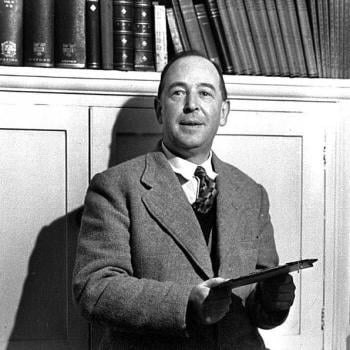You have doubtless heard about the college that had students stomp on the name of Jesus as an exercise in a class on cultural understanding. I noticed the parallel to something that happened in Gulliver’s Travels in which the satirist Jonathan Swift portrays Dutch traders as being willing to trod on a Crucifix as a way to convince the Japanese that they weren’t Christians so that they could trade with that country. Of course, the Dutch, being Calvinists, considered the Crucifix to be an idol, so stepping on it didn’t bother them.
I wondered how much of that was true and how much was Swift’s lampoon. The Dutch were the only Europeans the Japanese would trade with. Whether that was because they would trod on the Crucifix because of their iconoclastic theology, I’m not sure, but Swift, an Anglican priest, lambastes them. Anyway, I was glad to see that Anthony Sacramone, who has taken up blogging again, makes that same connection and tells us more about the requirement for blasphemy in the context of Christian persecution, now showing up in a college classroom.
(There was only one student who objected, by the way, and he was a Mormon. Did the Christians in the room just go along with it? Surely, desecrating the name of Jesus would bother even iconoclasts whose distaste for physical images never extended to the use of language.)
From New Addition to Core Curriculum: Stomp on the Name of Jesus | Intercollegiate Review:
Among Jonathan Swift’s many targets in Gulliver’s Travels are the Dutch. Strange you might say. Of all the evils to be bemoaned in the world of the 18th century, you wouldn’t think the tolerant Dutch would be among them. But you must see the world through a Swiftian eye. Japan of the Tokugawa shogunate had closed itself off to foreigners — except for Dutch traders (and then only under strict conditions). There were several reasons for this, but for Swift’s purposes, it was the Dutch tolerance rather than the apparent Japanese intolerance that was intolerable.
The Dutch toleration within their borders of vying religious sects was synonymous in Swift’s mind with a doctrinal and ecclesiastical wishy-washiness, which he despised, being a High Anglican. And so the great satirist composed a scene in which Gulliver asks the Japanese emperor if he can forgo stepping on a crucifix, as he, Gulliver, was “a Christian.” (What did that make the Dutch, who were allowed entry into Japan?) This ritual was resonant of the Tokugawa shogunate practice of “Fumi-e”: anyone suspected of secretly practicing the forbidden religion of Christianity was asked to stomp on an image of Jesus or Mary. Those who refused were tortured until they renounced their faith. If they held strong, they were executed. (Some Japanese Christians managed to secret themselves away for centuries.)
So any European who had access to Japan, and its trade, during this period must have been someone prepared to sell out his faith for a mess of patronage.
We now come to Florida Atlantic University, famous the world over for absolutely nothing. At least until recently, when an FAU professor asked his class to write the name “Jesus” on a piece of paper and . . . stomp on it.
Read the rest here.












